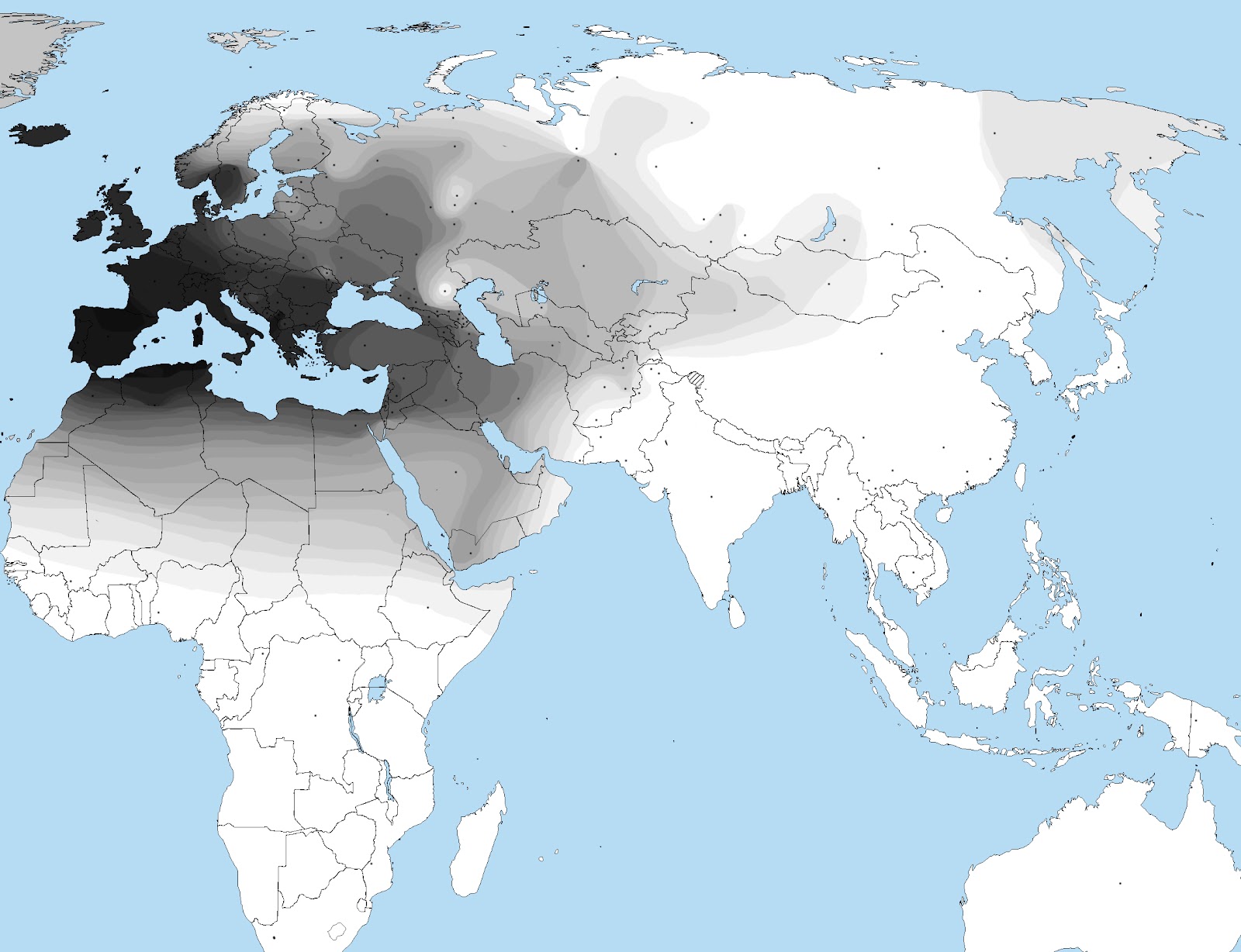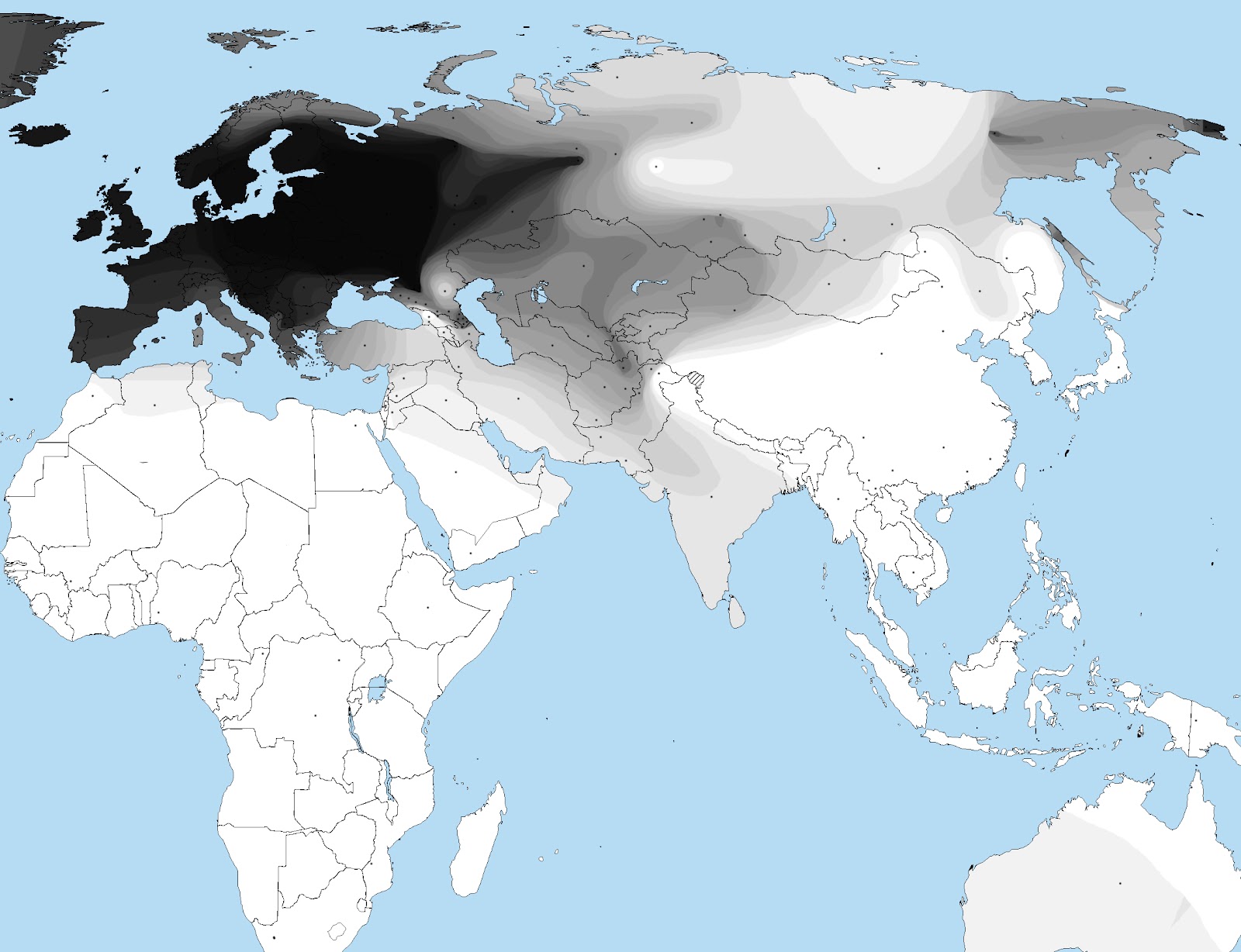Balkanite
Regular Member
- Messages
- 175
- Reaction score
- 28
- Points
- 0
- Y-DNA haplogroup
- J2b2-L283
Hello people,
I want to hear how and when you think the different non-slavic nationalities of the world got their I2a-Slavic input?
This is a discussion based on the premise that I2a-Slavic spread with the expansions an and migrations of the slavs.
If anyone disagrees on this fundamental premise that I2a-Slavic is slavic, then i advise you to go to one one the designated threads for discussing those things.
Posts disputing this simple premise will be seen as off-topic and spam, and i will personally report any post which breaks the premise for our discussion.
Again, there are other threads where you can discuss if I2a-Slavic is really slavic. This thread is for people who have settled on that fact, and are now actually moving on.
So, back to the subject.
I know a bit I2a-Slavic in greece and in albania, but you guys will have to help me with the rest of the countries
The greeks belonging to I2a-Slavic probably were slavs who lived in modern Greece during the formation of the greek state in 1821, but soon all orthodox churches became greek in language, so practically all I2a-Slavic Orthodox's who were fast enough to reach modern Greece before 1821, became Hellenized after 1821 and today, those ex-slavs still call themselves greeks.
The I2a-Slavic in albanians, may have come during the Ottoman Empire, where there were Muslim Gorani(slavs), Muslim Bosnians(slavs) and Muslim Albanians living side by side in many instances. Sometimes an albanian J2b2 would become slavicized if living among a majority of Muslim slavs, within a matter of a generation or two. On the other hand, a muslim I2a-Slavic slav would also be albanized if living among a majority of albanians for a generation or two.
So actually written sources and population demographics of middle age and modern history fits perfectly into the theory that those those countries with percentages of I2a-Slavic actually have small percentages of assimilated slavic Y-DNA.
And of course one should consider that Y-DNA doesn't decide what you are. I would still see the two above example individuals as one greek and one albanian. Just because one single ancestor of theirs was slavic, hardly makes them slavic in my eyes.
So, anyone know how and when other countries got their I2a-Slavic?
I want to hear how and when you think the different non-slavic nationalities of the world got their I2a-Slavic input?
This is a discussion based on the premise that I2a-Slavic spread with the expansions an and migrations of the slavs.
If anyone disagrees on this fundamental premise that I2a-Slavic is slavic, then i advise you to go to one one the designated threads for discussing those things.
Posts disputing this simple premise will be seen as off-topic and spam, and i will personally report any post which breaks the premise for our discussion.
Again, there are other threads where you can discuss if I2a-Slavic is really slavic. This thread is for people who have settled on that fact, and are now actually moving on.
So, back to the subject.
I know a bit I2a-Slavic in greece and in albania, but you guys will have to help me with the rest of the countries
The greeks belonging to I2a-Slavic probably were slavs who lived in modern Greece during the formation of the greek state in 1821, but soon all orthodox churches became greek in language, so practically all I2a-Slavic Orthodox's who were fast enough to reach modern Greece before 1821, became Hellenized after 1821 and today, those ex-slavs still call themselves greeks.
The I2a-Slavic in albanians, may have come during the Ottoman Empire, where there were Muslim Gorani(slavs), Muslim Bosnians(slavs) and Muslim Albanians living side by side in many instances. Sometimes an albanian J2b2 would become slavicized if living among a majority of Muslim slavs, within a matter of a generation or two. On the other hand, a muslim I2a-Slavic slav would also be albanized if living among a majority of albanians for a generation or two.
So actually written sources and population demographics of middle age and modern history fits perfectly into the theory that those those countries with percentages of I2a-Slavic actually have small percentages of assimilated slavic Y-DNA.
And of course one should consider that Y-DNA doesn't decide what you are. I would still see the two above example individuals as one greek and one albanian. Just because one single ancestor of theirs was slavic, hardly makes them slavic in my eyes.
So, anyone know how and when other countries got their I2a-Slavic?





